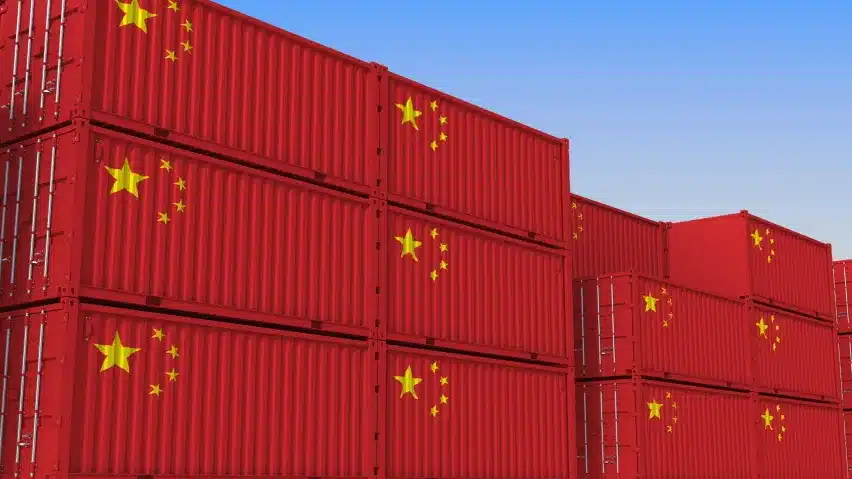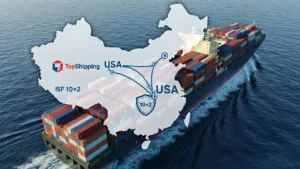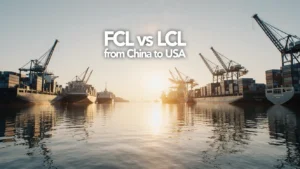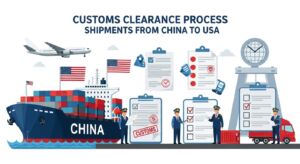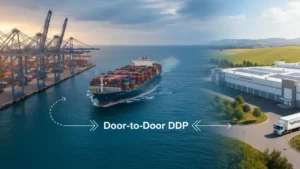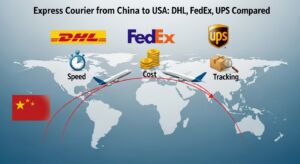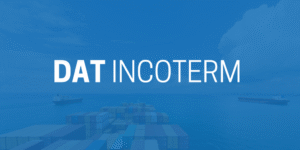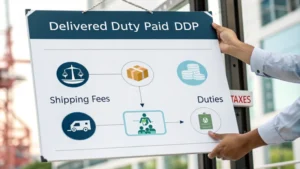Shipping from China insinuates the process of shipment from various Chinese manufacturers to different destinations in different parts of the world.
The whole process of shipment from China generally comprises a series of activities which may include sourcing products, price negotiations, organizing transport, and customs clearance.
Common shipping methods include sea freight, which is the most economical way to make large shipments, and air freight, quicker but more expensive.
In the case of businesses, this is commonly undertaken through freight forwarders to ease the process of logistics and to be in line with the shipping laws.
Shipping cost, delivery time, and choice of a logistics service provider are but a few determining factors for overall efficiency in sending goods from China to other parts of the world.
Why You Need a Freight Forwarder in China?
Shipping from China is not simple because of the logistics and regulations that make it complicated. It does call for a freight forwarder, such as Topshipping, to effectively get this done. Skilled workers provide insight on shipping routes, customs requirements, and tariffs that ensure compliance at minimal delays.
Topshipping can handle consolidated shipments, negotiate competitive rates with carriers, and take care of various other aspects in the shipping process. It lets business enterprises pay greater attention to their core operations through outsourcing expertise, hence efficiency in the supply chain. Ultimately, Topshipping makes what would be a very difficult job quite smooth, with goods arriving across borders on time and at low costs.
Key Factors to Consider When Choosing a China Freight Forwarder
Factors to Consider in Choosing a China Freight Forwarder
The following aspects are some of the key factors that deserve attention when choosing a freight forwarder in China:
Industry Experience
The forwarder must be experienced in dealing with your line of business. This would help him to understand better your peculiar shipping needs.
Network and Service
Their network of carriers and agents is going to be reviewed to see whether these can provide competitive pricing with reliable service.
Pricing Transparency
Prospective forwarders shall provide clear and comprehensive quotation by keeping all additional hidden costs transparent.
Customer service is also related to responsiveness, the politeness of responses, and good communication that could alleviate much of your headache in shipping.
Reliability
This should be investigated for timeliness and care for cargo. Reliability basically forms the backbone of every cargo-moving company.
Regulatory Compliance
It ensures that the shipping company adheres to international laws governing shipment. Otherwise, a non-compliant carrier may lead to legal problems.
Each one of these factors serves as an aid for you to make the perfect decision that caters to every need of your business, ranging from smooth to perfect shipping experience.
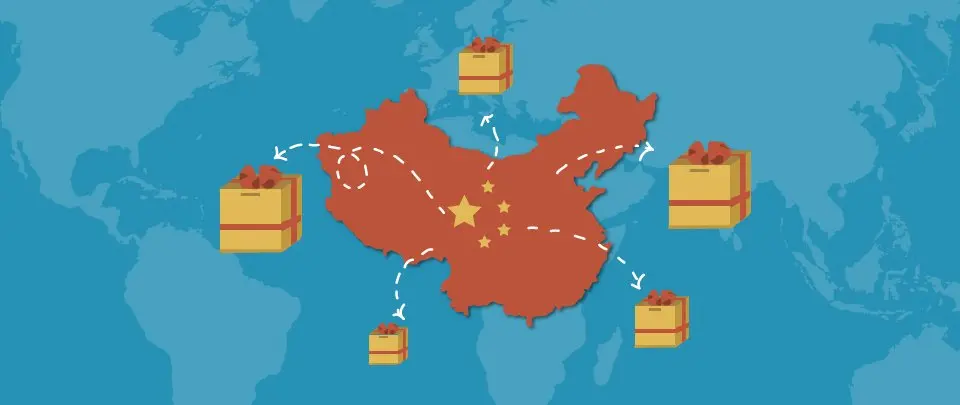
How to Find a Reliable Shipping Agent in China
First, finding an appropriate agent in China who is capable of providing reliable shipping involves a strategic approach: online research, for example, can be done using Alibaba and trade forums where businesses share their experience with several agents.
Positive reviews and solid track records in your industry should be the only indicators of a reputable agent. You can also network with other businesses that have imported goods from China to gather valuable recommendations.
When you have narrowed down your choices, perform background checks for licensing and insurance. Ask for quotes so you will see clearly the price and services offered to assure transparency in fees. Above all, effective communication is a key component; the agent should be responsive to clear up any inquiries you may have. It is also worth organizing a video conference or physical meeting to verify their professionalism and skills. Finally, place a small shipment with them to test their reliability before handing over bigger projects.
All you want is a reliable agent to handle the shipping at every level. Topshipping, with a wide experience in the field and its excellent reputation, is able to help in smoothing your logistics, ensuring efficiency and reliability of your shipping.
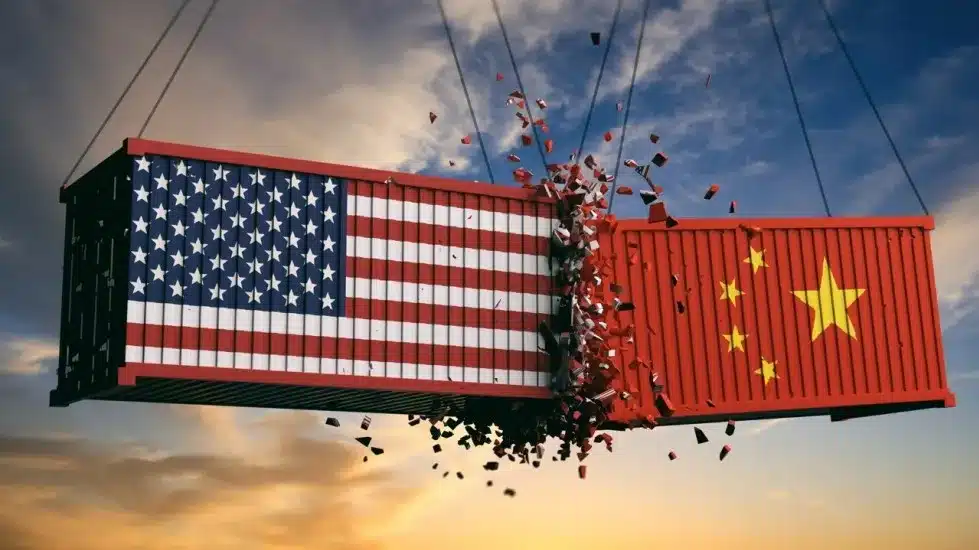
Freight Forwarding from China
In the case of international shipping, you will more than likely be dealing with a freight forwarder in China that will handle customs clearance right to delivery. They take away the nightmare of shipping goods across borders.
Topshipping is one of the most reliable options for companies exporting larger volumes. Topshipping is one of the trusted freight forwarders in China, offering professional and reliable services according to your needs. Even more so, their team can work in compliance with a local shipping agent in China in order to have your shipments professionally processed down to every little detail from start to finish.
Freight Shipping from China to USA
Freight shipping from China to the USA is an indispensable part of world trade, as it allows businesses to source anything they need. In most cases, it starts with finding the goods one wants from manufacturers, then proceeds with the selection of an effective shipping method-either by sea freight for larger shipments or air freight for expedited delivery.
Freight forwarders often step in to arrange documentation and customs clearance for goods, right from packing and labeling to logistic handling of goods. This will also ensure that everything is given to the international standards to avoid any potential delay that could have happened because of incomplete or missing documents. Timely and efficient communication between suppliers, freight forwarders, and customs authorities is extremely important to ensure a seamless shipping experience.
Topshipping will help you find your way through this process with reliable solutions. With a particular emphasis on logistics management, documentation, and customs clearance, Topshipping ensures a smooth and efficient shipping experience from China to the USA, fosters reliable connections, and supports economic growth across borders.
Shipping from China to the UK
Major steps for the shipping process from China to the UK include the following: First, it starts with product sourcing from different Chinese manufacturers. Additionally, quality control and negotiation of terms are always imperative during sourcing. When products are ready, the next step will be choosing a shipping method-sea freight is common for bulk shipments, while air freight is used in cases where expedition of delivery is needed.
Once the transportation method has been decided, quite often a freight forwarder is used to manage the logistics. This includes preparing any documentation required by UK regulations to comply. Goods are moved to the port of export from which cargo is transported directly to the UK port of arrival, where goods are customs cleared.
In the entire process, there is a need for communication between suppliers, forwarders, and customs for the purpose of avoiding delay and ascertaining that delivery is timely. Such an intricate process helps in facilitating smooth trade between China and the UK while supporting global commerce.
Shipping Charges to China and How to Lower Costs
Shipping to China can be expensive for a number of reasons: distance, weight, and customs regulations. Suffice it to say that businesses and other people need to understand this cost in order to minimize their expenses.
One of the methods to reduce shipping cost is the right selection of a shipping method. A sea freight option might be much cheaper if the consignment is bulkier, whereas air freight would be expensive but would take less time.
Another way to reduce shipping costs is to consolidate shipments. Consolidating shipment involves putting together packages that can bring economies for the owner in the form of per unit cost of shipping.
It would also expedite the shipment process and save overall costs by utilizing local warehouses in China. This will lead to shorter delivery times and possibly avoid high international shipping rates.
Other plans of action could include negotiating rates with shipping carriers, using third-party logistics providers that have cheaper ways of shipping. Also, there should be a preparedness for customs duties and taxes to avoid unexpected charges upon delivery.
Finally, you can utilize shipping software that compares prices across carriers. This keeps you sure that you have the most economical rate for whatever shipment needs you may be looking for. Using these methods will help you save much on the cost of shipping to China without affecting the efficiency in the line of logistics.
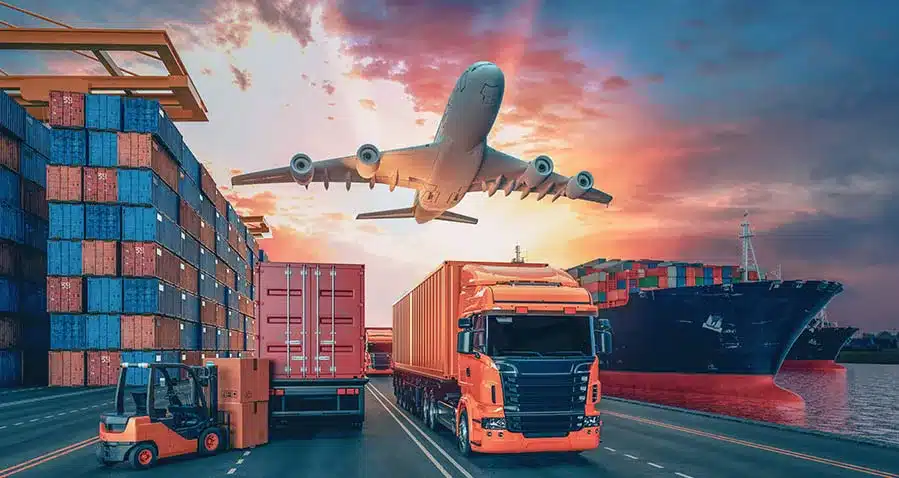
Cheapest Way to Ship to China
Best Shipping Methods for Cost Savings
The two best methods to save costs while shipping to China are by sea freight and by air freight. It is always best to utilize Sea Freight when the volume of shipment is huge so saving on the transportation cost is pertinent though it takes a little longer in delivery. It is good for bulk shipments and therefore is one of the most favored by many companies.
On the other side, air freight is faster and more suitable for smaller-sized, time-critical packages. Irreplaceable in urgent situations, it is generally more expensive.
The perfect strategy for saving money would be an approach that includes using both methods: sea freight for routine shipping and air freight for urgent situations. Logistics will be efficient with bearable expenses, hence taking care of speed-saving priorities side by side.
Choosing Between Sea Freight and Air Freight
Shipping requires decisions on what method of freight would best meet the budget, speed, and shipment size-sea freight or air freight. sea freight is cost-effective for large volumes that prove ideal for bulk shipments. It offers rates much lower than air freight, but it usually takes long in transit, which may not meet urgent needs.
On the other hand, air freight is faster in that it has quicker delivery for smaller, time-sensitive packages. However, it does come at a higher cost per kilogram.
It simply depends on your shipping priority, whether you go with the sea freight shipping method because you are on a tight budget or air freight because you have to deliver something as fast as possible; striking a balance between both factors will definitely yield the best results for your logics.

Shipping Container from China
In China, there are a few varieties of shipping containers that prevail for different cargo requirements. The general freight could be covered by the demand for standard containers of 20-foot and 40-foot sizes, with adequate area that can accommodate bulk cargo.
There are refrigerated containers, better known as reefers, highly important to carry perishable items that require a particular temperature throughout shipment. Then there are flat rack containers serving the purpose of overweight cargo that cannot fit into any standard container, offering flexibility for heavy machinery or large equipment.
While open-top containers provide an easy way of loading tall items, tank containers are meant for liquids. Each type thus fills different needs, guaranteeing effective shipping within various industries.
Key Chinese Ports for Container Shipping
Key Chinese ports for container shipping include:
Shanghai: The largest and most active port in China, Shanghai is a significant shipping center worldwide, its facilities for processing container cargo being on a large scale, with a developed international route network.
Shenzhen: With several constituent ports including Yantian, Shekou, and Chiwan, Shenzhen is a strategic export port, particularly for the south of the country, linked quickly to overseas markets.
Ningbo-Zhoushan: This is one of the busiest ports in the world, located in Zhejiang Province, and has a capacity for massive handling due to its strategic position on the East China Sea.
Guangzhou: This is a main artery port for southern China; it is situated in the Pearl River Delta and enjoys one of the highest volumes of import and export, especially of commodities produced within that particular region.
Tianjin: It serves the northern part of China and is a very important gateway to trade; it is highly facilitated and interconnected with Beijing and the surrounding areas.
Qingdao: Located in Shandong Province, Qingdao is also one of the key ports for containerized and bulk cargoes, equally efficient in operations and strategically placed along the Yellow Sea.
Although Hong Kong is a Special Administrative Region, the city continues to be one of the most important container shipping ports in the world because of its sophisticated infrastructure and the short time it takes to connect with major market places around the world.
These ports continue to act as important nodes within the vast shipping network of China, enabling international trade and thereby connecting the world economy.
Choosing a Chinese Shipping Company
There are a lot of shipping companies in China for different needs: from huge shipments with Maersk Enshi to UPS for smaller ones. The right partner selected is of great importance.
Among the shipping companies in China, Topshipping is second to none when it comes to handling international shipments. Being one of the renowned Chinese shipping companies, Topshipping provides a local feel with global exposure so that your shipments are managed with utmost efficiency and professionalism.
Final Takeaway
It be shipping to China or importing merchandise, dealing with a trusted China shipping agent or freight forwarder ensures that your merchandise will arrive at a destination smoothly. Knowing how much it costs to ship from China and choosing the right method-be it by air, sea, or express mailing-can save one a lot of time and money.If you are in need of a partner for your shipping needs, Topshipping is the one to reach out to. Topshipping helps in streamlining the shipping procedure with their expertise and comprehensive services so that goods reach in a very efficient manner and on time, providing value for money.
